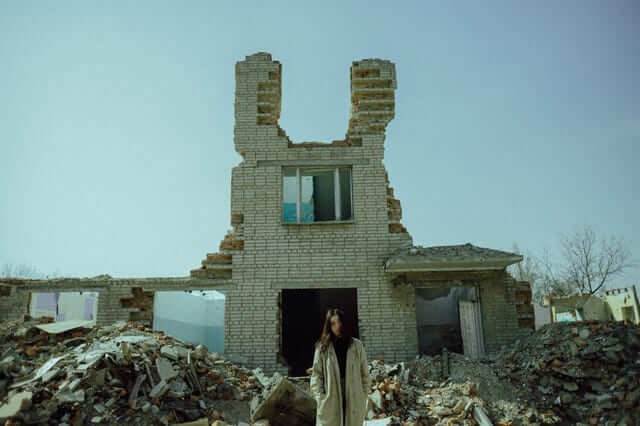What Is An Earthquake?
An earthquake is the shaking of the Earth’s surface. Earthquakes are caused by a sudden release of energy in the Earth’s lithosphere, which creates seismic waves. This seismic activity manifests itself through the shaking of the Earth’s ground. Sometimes, when the epicenter of an earthquake is offshore, the surfaces under the ocean may be displaced enough to cause a tsunami. The “seismicity” of the earthquake is experienced over a period of time and has a wide range of severity. It can be anywhere from so weak that it is not detectable to humans to severe enough to completely destroy entire communities and cities. Preparedness for earthquakes is essential, as many of us will experience at least one within our lifetimes. Not having information on what to do in the case of an earthquake, especially one of significant size, can be fatal. Because of this, we have written an ebook specifically for emergency preparedness. It is quick to read, easy to understand, and will help prepare you and your family for one of the world’s most common natural disasters.How Should I Prepare For An Earthquake Beforehand?
First, with your loved ones, you will want to prepare for an earthquake first by creating an emergency earthquake plan. This emergency plan can consist of information such as what you will do in the case of an earthquake, where you will meet if you are separated, and how you will communicate. The plan should include how you will receive emergency alerts and warnings, what is included in a shelter plan, how you will evacuate, and your specific family or household communication plan. Teaching kids the proper way of seeking shelter is critical and should be included in your family earthquake emergency plan. After this, practice executing your plan often with your family in case of a real-life emergency. Second, as a preventative measure, consider securing especially heavy furniture–such as refrigerators, bookshelves, televisions, objects hanging on walls, and dressers–to the walls in your house. Store heavy and breakable objects on low shelves. Third, create an emergency earthquake survival kit.What Should Be In An Earthquake Survival Kit?
An earthquake kit is a collection of small items that could be useful or life-saving in the case of an earthquake. In this kit, you should include one gallon of water per person per day for three to 7 days days. This is in case of being trapped within a structure. In addition, you will want to include a three to seven day supply of nonperishable food per person, for the same reason. After covering food and water, add the following:- Flashlight
- NOAA Weather Radio with tone alert
- First-Aid Kit
- Batteries
- Whistle (to signal for help)
- Dust Mask
- Moist Toilettes
- Garbage Bags
- Plastic Ties (for personal sanitation)
- Toilet Paper
- Wrench or Pliers (to turn off utilities if needed)
- Manual Can Opener (for food)
- Local Maps
- Cell Phone with Charger and Back-Up Battery
- Any Necessary Prescription Medications
What Should You Do During An Earthquake At Home?
If you are indoors and you feel the ground start to shake, stay where you are instead of running away or outside. Immediately drop to the ground and crawl to a sturdy piece of furniture, such as a desk or a table. Take shelter under this desk, and hold on with one hand. Although many people think that hiding under a door frame is safe, recent studies have found that it is not. It is essential to avoid door frames and seek shelter under a sturdy piece of furniture in your home. Doing so will prevent heavy objects from falling and potentially crushing you. If you are unable to find a sturdy piece of furniture in which to take shelter near you, immediately cover your head with your hands. Go to the corner of the room as quickly as possible and huddle, with your face to the corner, for as long as necessary until the shaking stops. Keep your head protected by your hands or any small objects near you that would break the fall of any large, flying objects. If you are outside in the case of an earthquake, stay outside. Try to get away from any large building or anything that could potentially fall on you. Be aware of your surroundings and try to find an open area. One thing you really need to be aware of, if you are outside, is where the powerlines are located. If there is any chance these could fall down near you, get away from that area as fast as you can. If you are in a vehicle, pull over, stop, and set the parking brake as quickly as possible. Stay in the car and wait for the earthquake to pass. No matter where you are, you want to take a quick inventory of all of your surroundings. If there is anything obvious that could cause harm if displaced, stay away from that item if possible. As a general rule, no matter where you are, you want to travel as little as possible. Stay where you are and seek shelter within your environment.Is It Better To Be On The Top or Bottom Floor During An Earthquake?
During an earthquake, it is safer to seek shelter on the top floor. The bottom floor will be more prone to violent shaking. Being upstairs, the jolts will be less severe. In addition, if you are downstairs and the building collapses, it can take days for rescuers to find you under the collapsed rubble. It is extremely dangerous to move from an upstairs location to a downstairs location during an earthquake and should be done only if necessary.Where Is The Safest Place To Be During An Earthquake?
The safest place in which to seek shelter during an earthquake is under a heavy piece of furniture on the top floor in your home. That being said, if you are downstairs when you feel an earthquake begin, stay where you are and seek shelter under sturdy furniture or within a corner close to yourself.FULL EARTHQUAKE SURVIVAL GUIDE
Again, for a full earthquake survival guide, check out our eBook using the link below.Related posts:
How To Grow Produce In The Winter?
4 of The Most Common Earthquake Myths
How Are Earthquakes Measured?
Understanding The Earthquake Risks in Your Area
What Should Be Included In a Natural Disaster Kit?
Besides a Pandemic, What Else Should I Prepare For?
3 Things To Remember When Storing Emergency Food Long-Term


